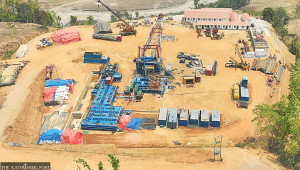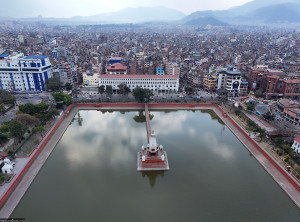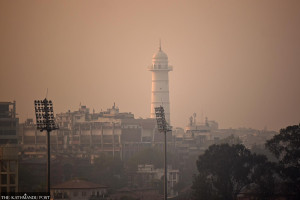Money
NAC to retire one of its two Boeing 757 jetliners
Nepal Airlines Corporation (NAC) has been moving ahead to phase out its two vintage Boeing 757s as it is no longer profitable to fly them due to their high maintenance costs compared to the revenue they bring in.
Nepal Airlines Corporation (NAC) has been moving ahead to phase out its two vintage Boeing 757s as it is no longer profitable to fly them due to their high maintenance costs compared to the revenue they bring in.
The Karnali, bearing registration number 9N-ACA, will be retired first. The jet will complete 29 years of service in August. Last week, the NAC board agreed in principle to allow the management to send off one of the two ageing 757s.
“After the board’s go-ahead, the management will prepare an aircraft valuation report,” said spokesperson for the national flag carrier Ram Hari Sharma. “The board will again assess the report before giving its final approval to put the jet up for sale,” he said.
The aircraft is presently in Singapore for an engine overhaul. The 9N-ACA arrived in Nepal in 1987 and made its first flight on August 20. The jet flew on long-haul routes, displaying the national flag at world airports. The 757 holds 190 passengers. The Boeing 757 is a mid-sized, narrow-body twin-engine jet airliner built by Boeing Commercial Airplanes. It was in production from 1981 to 2004.
According to Sharma, flying these old Boeings has become economically unviable as their maintenance and other costs are much higher.
Each of NAC’s Boeings earns about Rs2 billion annually, and it costs the carrier almost the same in maintenance expenses. “NAC has no operating gains. It has been surviving with the income generated from its ground handling services at Tribhuvan International Airport (TIA),” said a retired NAC official.
The phase-out programme of NAC’s Boeing aircraft is a positive step, but there should be a matching replacement plan, he said. “In fact, the phase-out plan has come quite late.”
This aircraft never gets old. However, ageing jets have many unforeseen problems which ultimately make them economically unviable, he said.
The plane’s high fuel consumption is another matter of concern for the state-owned airline. According to officials, the Boeing 757 guzzles 4 tonnes of fuel per hour compared to 2.5 tonnes for new aircraft.
The national flag carrier had also prepared a 10-year business plan under which one of its two 757s would be phased out by 2015 and the second one by 2019. However, the Tourism Ministry rejected the scheme.
Nepal Airlines saw its strongest passenger growth after it added two new Airbus A320 aircraft to its fleet last year. The much-maligned national flag carrier flew 253,658 travellers, up 22.87 percent compared to the previous year. TIA statistics show that after the induction of the two new jets, Nepal Airlines received 47,000 more passengers. The national flag carrier has planned to add two wide-body aircraft.
The carrier presently serves seven international destinations, including three Indian cities, and plans to expand operations to three more destinations, namely Guangzhou, Dubai and Saudi Arabia, in the near future.
A decade ago, NAC was flying to 21 international destinations. Its international network has shrunk rapidly since then reflecting the rot in the company caused by mismanagement and political interference.




 24.73°C Kathmandu
24.73°C Kathmandu













